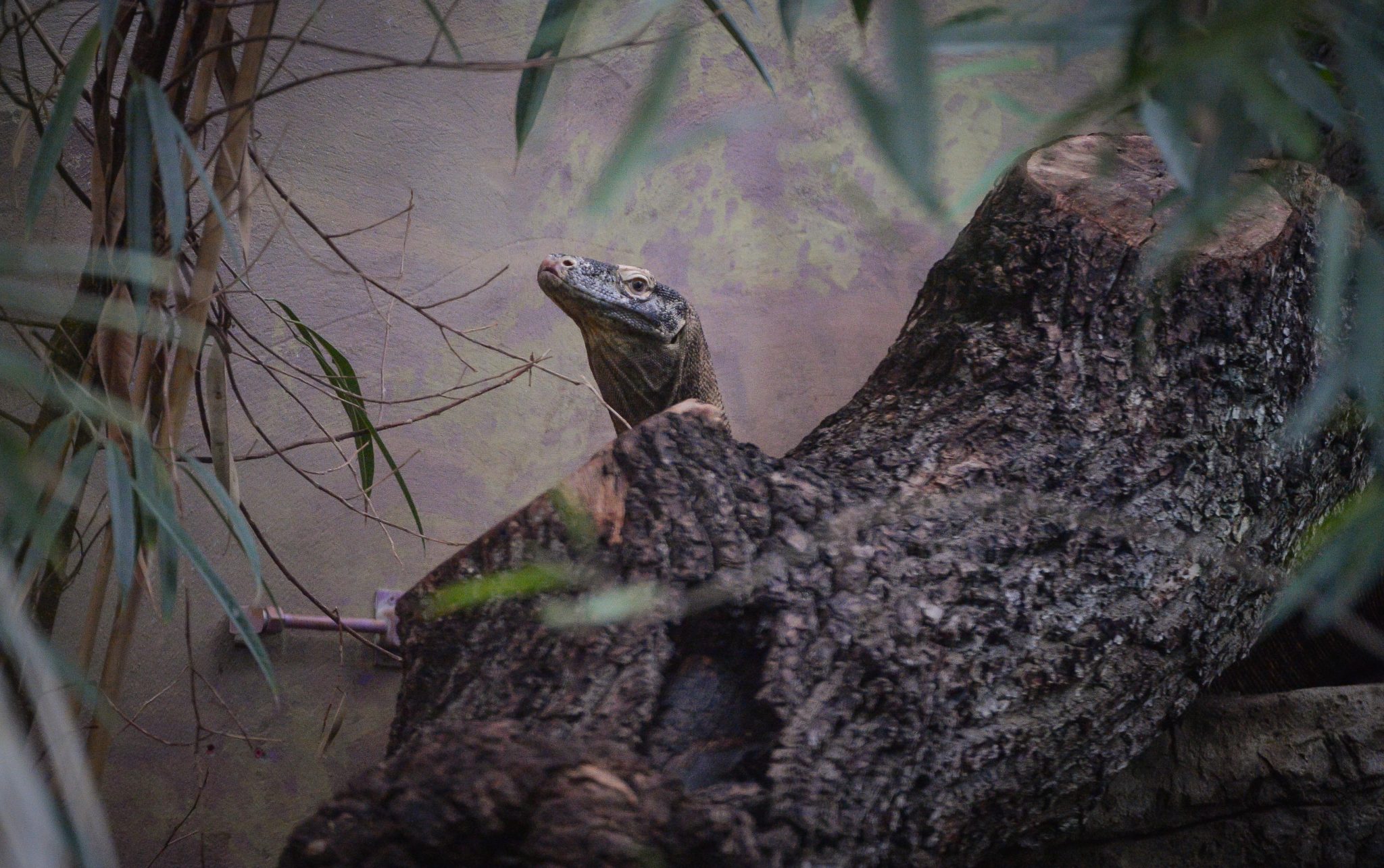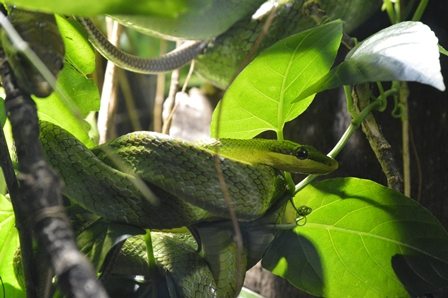At Chester Zoo, we house a vast number of reptiles that, unlike mammals, cannot maintain their own body temperature and must rely on their environment for thermoregulation – the process that allows the body to maintain its core internal temperature.
Therefore, it’s important that we provide the most effective way for our animals to obtain the heat that they need to remain healthy. Here at the zoo, we conducted a study to evaluate how well heat panels and smaller spot lamps provide heat for three species of reptile; Komodo dragons, Galapagos tortoises and red tailed racers.

Using a thermal imaging camera, which uses colour to display temperature, and a laser pointer thermometer, the heat distribution over the animals’ bodies was recorded. Alongside this, we used cameras to watch our animals’ basking behaviour under each of the different lamps.

We found that for the larger reptiles – such as the Komodo dragon – spot lamps, which are commonly used in zoo collections, did not provide effective heat coverage over the entire body length, in comparison to the heat panels. For smaller species however, the spot lamps were sufficient. Following the research and using this information from our results, we have made changes to the heat provisions for each reptile species.


Images from the thermal imaging camera
Studies like this are important to the zoo as they use scientific evidence to help our keepers provide the best husbandry for all our animals!